 Using Configuration Manager 2012 in an environment that must be high(er) available gives you a number of options that you can use to make the Configuration Manager 2012 site roles high available. In this blog I want to point out the options and highlight one in particular, the SMS Provider.
Using Configuration Manager 2012 in an environment that must be high(er) available gives you a number of options that you can use to make the Configuration Manager 2012 site roles high available. In this blog I want to point out the options and highlight one in particular, the SMS Provider.
There are as mentioned several options to make your site system roles high(er) available.
Publish Configuration Manager 2012 data in DNS or Active Directory
By publishing information about the site and site systems in DNS or Active Directory gives you the ability to store the information in distributed databases. Of course you need to have more than one DNS or Domain Controller. 🙂
Configuring Configuration Manager 2012 database on a SQL Server Cluster
You are able to move the Configuration Manager 2012 database to a SQL Server Cluster like described here or you are able to configure it on a SQL Server cluster in the first place.
Adding Management Points
It is fairly easy to add Management Points to your Configuration Manager 2012 Primary Site (or Central Administration Site). This is done by creating a new Site Server and selecting the Management Point Role.

An extra option is to use a replica database in for instance another data center instead of using the site database to decrease CPU intensive operations of Management Points. We select the site database since it is already clustered and it is a small environment 😉

You do not need to load balance the Management Points, Configuration Manager 2012 will do this out of the box.
Adding Distribution Points / State Migration Points / Application Catalog roles / Reporting Points
Adding Distribution Points, State Migration Points, Application Catalog web service points, Application Catalog website points or Reporting points can be done in the same way as adding Management Points. Of course are you able to add site system roles to already added Site Servers.
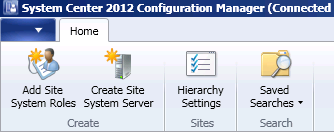
Distribution Points are located by configuring the boundaries and boundary groups in the correct way. You can for instance use fallback locations for content.
Adding State Migration Points gives you the ability to create more storage locations. The State Migration Point itself is better available, not the stored user data.
Adding more instances of reporting points gives you the ability to use different reporting points. Installing multiple application catalog site roles can be used to redirect a client to an available instance or an instance at a local site server based on the network location.
Adding Software Update Points
More than one Software Update Point can be installed on a Windows Network Load Balancer (NLB) to provide support for failover. The installation is done in the same way as the earlier described roles.
Adding SMS Providers
The SMS Provider takes care of the communication between the Configuration Manager 2012 Console and the Configuration Manager 2012 Database. When having one server that holds the SMS Provider role is down, then you are not able to manage your Configuration Manager 2012 environment. Adding a SMS Provider is not done via the Configuration Manager Console but via the Configuration Manager Setup at a Primary Site server.
You can find the Configuration Manager Setup tool in the Start Menu, after stating the setup click on next after reading the Before you begin notice. Select the option Select Perform Site Maintenance or reset this site and click on Next.
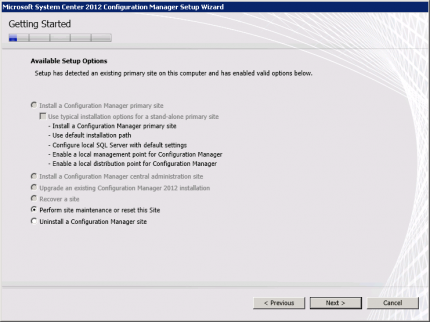
Select Modify SMS Provider configuration and click on Next.
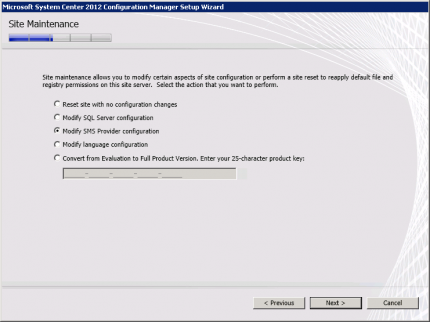
Select Add a new SMS Provider and supply the FQDN of the server where the SMS Provider needs to be installed and click on Next.
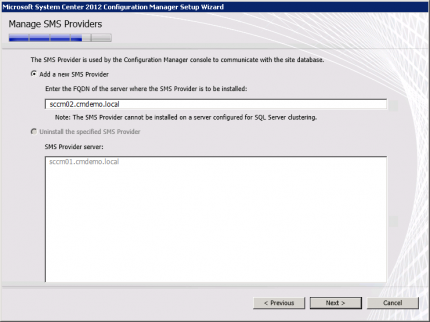
After the installation is ready, like shown beneath you can close the setup wizard.
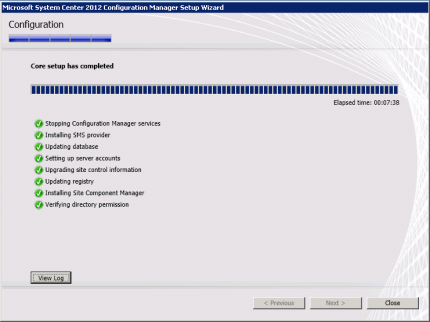
When going to the Server on which the SMS Provider is installed you will see that a SMSPROV folder is created with subfolders that hold for instance the local SMSProv.log. But also a local installation of the Windows Automated Installation Kit and some MOF files.
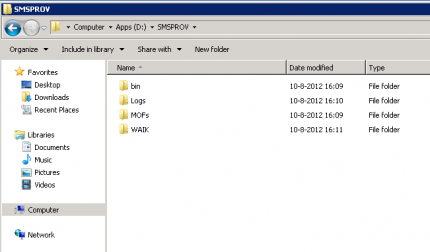
While looking in the Logs folder you see a file called sdkinst.log. This file can be used to see if the installation of the SMS Provider was successful or what issues are reported while installing the SMS Provider.
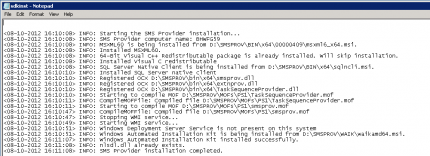
Site Roles that do not have high availability options
All the other roles do not have options for high(er) availability, see here the summary of those site roles:
- Asset Intelligence synchronization point
- Endpoint Protection Role
- Enrollment point
- Enrollment proxy point
- Fallback Status Point
- Out of band service point
All of those roles are not considered mission critical and provides optional functionality in Configuration Manager 2012.



Hi Peter,
Does not look like HA works for Management Console: I installed the second SMS_Provider, but never succeeded to connect to the server holding the role using ConfigMgr Admin Console(http://777notes.wordpress.com/2012/08/21/sccm-2012-ha-for-admin-consolenot-possible/), people here: http://www.myitforum.com/forums/m236764.aspx describes the same issue.
Did you try that?
Regards,
-Alex
hi Peter Daalmans,
Above post is great, But can you provide more detail on installing Application catalog role on SCCM in which the db is present in a cluster.
as i have configured application catalog role and my sccm db is present in a sql server 2012 cluster now when i try to connect to the application catalog using the application catalog web portal it fails to connect after asking the account & password and says the “connot connect to the application server” .net 4.0 is installed with http activation.
need one more favor can you post the connection string present in iis for CMApplicationCatalog